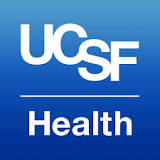Donor Lymphocyte Infusion With Azacitidine to Prevent Hematologic Malignancy Relapse After Stem Cell Transplantation
| Status: | Active, not recruiting |
|---|---|
| Conditions: | Cancer, Blood Cancer, Blood Cancer, Blood Cancer, Blood Cancer, Hematology |
| Therapuetic Areas: | Hematology, Oncology |
| Healthy: | No |
| Age Range: | Any - 29 |
| Updated: | 4/5/2019 |
| Start Date: | June 2015 |
| End Date: | April 2020 |
A Phase II Study of Risk-adapted Donor Lymphocyte Infusion and Azacitidine for the Prevention of Hematologic Malignancy Relapse Following Allogeneic Stem Cell Transplantation
The goal of this study is to determine whether post-transplant consolidation with azacitidine
combined with donor lymphocyte infusion (DLI) is a safe and effective approach for the
prevention of relapse in pediatric and young adult patients with hematologic malignancies who
have undergone hematopoietic stem cell transplantation (HSCT).
combined with donor lymphocyte infusion (DLI) is a safe and effective approach for the
prevention of relapse in pediatric and young adult patients with hematologic malignancies who
have undergone hematopoietic stem cell transplantation (HSCT).
This is a phase II single-arm trial of azacitidine (IV or SC) in combination with escalating
donor lymphocyte infusion (DLI). Patients will be enrolled on the study by day +28 +/- 7
post-transplant, prior to withdrawal of immunosuppression or administration of donor
lymphocyte infusion (DLI). They will have donor chimerism and minimal residual disease (MRD)
testing from peripheral blood (PB) and bone marrow (BM) on day +28 ± 7. Patients will be
stratified according to risk categories (low, standard and high), defined by GVHD status,
mixed versus full donor chimerism, and positive versus negative MRD results. Depending on
risk assessment, immunosuppression will be tapered according to standard or fast schedules,
and patients (with the exception of low-risk ALL patients) will receive one cycle of low-dose
azacitidine (40mg/m2 IV/SC daily x 4 days). After tapering immunosuppression, chimerism will
be repeated and patients will receive up to 6 additional cycles of low-dose azacitidine,
depending on risk assessment. For patients who meet criteria for high risk of relapse,
azacitidine will be combined with escalating doses of DLI for a maximum of 7 cycles in total.
Risk and safety assessments, including routine laboratory parameters, donor chimerism,
minimal residual disease, and GHVD activity will be assessed following each cycle. Chimerism
and minimal residual disease testing will be repeated every cycle by peripheral blood (PB),
and bone marrow (BM) will be tested every other cycle. Patients will be followed by
laboratory monitoring and physician evaluation prior to each cycle, and will be followed for
two years post-transplant to study toxicity and GVHD outcomes.
donor lymphocyte infusion (DLI). Patients will be enrolled on the study by day +28 +/- 7
post-transplant, prior to withdrawal of immunosuppression or administration of donor
lymphocyte infusion (DLI). They will have donor chimerism and minimal residual disease (MRD)
testing from peripheral blood (PB) and bone marrow (BM) on day +28 ± 7. Patients will be
stratified according to risk categories (low, standard and high), defined by GVHD status,
mixed versus full donor chimerism, and positive versus negative MRD results. Depending on
risk assessment, immunosuppression will be tapered according to standard or fast schedules,
and patients (with the exception of low-risk ALL patients) will receive one cycle of low-dose
azacitidine (40mg/m2 IV/SC daily x 4 days). After tapering immunosuppression, chimerism will
be repeated and patients will receive up to 6 additional cycles of low-dose azacitidine,
depending on risk assessment. For patients who meet criteria for high risk of relapse,
azacitidine will be combined with escalating doses of DLI for a maximum of 7 cycles in total.
Risk and safety assessments, including routine laboratory parameters, donor chimerism,
minimal residual disease, and GHVD activity will be assessed following each cycle. Chimerism
and minimal residual disease testing will be repeated every cycle by peripheral blood (PB),
and bone marrow (BM) will be tested every other cycle. Patients will be followed by
laboratory monitoring and physician evaluation prior to each cycle, and will be followed for
two years post-transplant to study toxicity and GVHD outcomes.
Inclusion Criteria:
- Patients age 0 - 29.9 years undergoing allogeneic peripheral blood stem cell
transplant
- Patients with acute myelogenous leukemia (AML) or acute lymphoblastic leukemia (ALL)
- Patients with juvenile myelomonocytic leukemia (JMML)
- Patients with myelodysplastic syndrome (MDS)
Exclusion Criteria:
- Patients who have had a prior transplant.
- Patients with Fanconi anemia or other cancer-predisposition syndromes
- Patients with expected survival <12 weeks
- Lansky score <60%
We found this trial at
1
site
505 Parnassus Ave
San Francisco, California 94143
San Francisco, California 94143
(415) 476-1000

University of California, San Francisco Medical Center UCSF Medical Center is recognized throughout the world...
Click here to add this to my saved trials